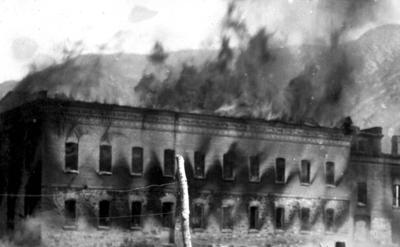When they reached the spinning room with its clatter of shifting bobbins, Mr. Munger turned to Donald:
当他们来到纺纱房,听到纺纱线转动的声音,芒格先生转向唐纳德:
“I wonder if you know that wool is worked into two different kinds of yarn—worsted and woolen yarn. The fibers for worsted yarn are long and lie nearly parallel, and when woven, have a smooth surface. Broadcloth is made from worsted yarn. Woolen yarn, on the other hand, has its fibers lying in every direction, and all these loose ends, when woven, give a rough surface. Of course when this cloth is finished, it is smooth, but not so smooth and fine as a worsted cloth.”
“我想知道你是否知道羊毛可以加工成两种不同的精纺纱线和毛纺纱线。精纺毛纱的纤维很长,几乎平行排列,织造时表面光滑。阔幅布是由精纺毛纱制成的。另一方面,羊毛纱线的纤维分布在各个方向,所有这些松散的末端在织的时候,会产生粗糙的表面。当然,当这种布完成时,它是光滑的,但不像精纺布那样光滑和精细。”

“I think I understand,”Donald said. “Are we to see the cloth woven next?”
“我想我懂了,”唐纳德表示。“接下来我们是要看织布吗?”
“Yes. This mill weaves nothing but woolens; you must go to a worsted mill to see the other kinds of cloth made. The processes, though, are much alike.”
“是的。这个磨坊只织毛织品;你必须到精纺厂去看其他种类的布料。然而,这些过程非常相似。”
Mr. Hunger then hurried the party to the weaving mills, where, amid an uproar of thousands of moving wheels, bobbins, and shuttles, the threads of yarn traveled back and forth, back and forth, and came out of the looms as cloth. The cloth was then steamed, pressed, and rolled or folded.
然后,亨格先生把他们赶到织布厂,在那里,在成千上万的转动着的轮子、筒子和梭子的喧闹声中,纱线在那里来回穿梭,最后从织布机出来。然后将布蒸、压、卷或折叠。
“And now, young man,”said Mr. Hunger to Donald, “you know the whole story of wool.”
“现在,年轻人,”饥饿先生对唐纳德说,“你了解了关于羊毛的整个故事。”



